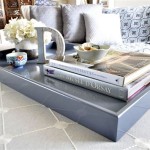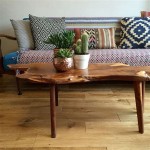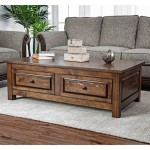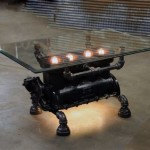Lift Top Coffee Table Plans: A Comprehensive Guide
Lift top coffee tables have gained considerable popularity in recent years, prized for their dual functionality and space-saving design. They serve as both a traditional coffee table and a convenient elevated surface for working, eating, or other activities. Constructing a lift top coffee table can be a rewarding DIY project, allowing for customization and the satisfaction of building a functional piece of furniture. This article provides a comprehensive overview of lift top coffee table plans, covering design considerations, material selection, hardware options, and construction techniques.
Understanding the Design and Functionality
Before embarking on the construction process, it's crucial to thoroughly understand the design principles and intended functionality of a lift top coffee table. The primary defining feature is the lifting mechanism, which allows a portion of the table surface to be raised and locked into place at a higher level. This elevated surface provides a comfortable height for various tasks, eliminating the need to lean over a low table.
Consider the intended use of the table. Will it primarily be used for eating, working on a laptop, or playing board games? The answer to this question will influence the dimensions of the table, the lift mechanism chosen, and the overall structural integrity required. For instance, a table intended for frequent use with heavy objects, such as laptops and books, will necessitate a more robust lift mechanism and a sturdier frame.
The aesthetic design is another critical consideration. Lift top coffee tables can be adapted to suit a wide range of interior design styles, from rustic and traditional to modern and minimalist. The choice of wood species, finish, and hardware will significantly impact the overall appearance of the finished product. It is beneficial to gather inspiration from existing furniture pieces and online resources to determine the desired aesthetic.
Storage is another key aspect to consider. Many lift top coffee tables incorporate storage compartments beneath the lifting surface. This storage space can be used to house remote controls, magazines, blankets, or other items, helping to keep the living room tidy. The size and configuration of the storage compartment should be carefully planned based on the intended contents.
Selecting Materials and Hardware
The choice of materials is paramount to the durability and aesthetics of the lift top coffee table. Solid wood is a popular option, offering strength, beauty, and longevity. Common wood species include oak, maple, cherry, and walnut. Each species has its unique grain pattern, color, and hardness characteristics. Softwoods, such as pine, can also be used, but they are generally less durable and more susceptible to dents and scratches.
Plywood and engineered wood products are also viable options, particularly for larger panels and hidden structural components. Plywood offers excellent dimensional stability and resistance to warping, making it suitable for table tops and sides. Medium-density fiberboard (MDF) is a smooth, paintable surface often used for drawer fronts and cabinet doors. However, MDF is susceptible to moisture damage and should be sealed appropriately.
The lift mechanism is arguably the most critical hardware component. Several types of lift mechanisms are available, each with its advantages and disadvantages. Spring-loaded mechanisms are a common choice, offering smooth and reliable operation. Gas-spring mechanisms provide a more controlled and dampened lifting action. Consider the weight capacity of the mechanism and ensure it is adequate for the intended load.
Other hardware components to consider include hinges, screws, drawer slides (if storage compartments are included), and decorative hardware such as knobs or pulls. High-quality hardware will contribute to the overall functionality and longevity of the table. Stainless steel or brass hardware is a good choice for its corrosion resistance and durability.
Fasteners, such as screws, bolts, and wood glue, are essential for assembling the table frame and components. Use high-quality wood glue to create strong and durable joints. Screws should be properly sized and selected based on the thickness of the wood being joined. Pocket screws can be used to create hidden joints, enhancing the aesthetic appeal of the table.
Construction Techniques and Assembly
The construction process for a lift top coffee table involves several stages, including cutting, joinery, assembly, and finishing. Accurate cutting is crucial for ensuring that all components fit together properly. Use a table saw, miter saw, or circular saw to cut the lumber and plywood to the specified dimensions.
Joinery techniques play a critical role in the structural integrity of the table. Common joinery methods include butt joints, dado joints, rabbet joints, mortise and tenon joints, and dovetail joints. The choice of joinery method will depend on the specific design and the tools and skills available. Strong and well-executed joinery will ensure that the table is stable and durable.
Assembly involves connecting the various components using screws, glue, and other fasteners. Start by assembling the table frame, ensuring that it is square and level. Then, attach the table top and the lifting mechanism. Carefully follow the manufacturer's instructions for installing the lift mechanism.
If the design includes storage compartments, assemble the drawers or cabinets separately and then install them into the table frame. Use drawer slides to ensure smooth and easy operation of the drawers. Install hinges on cabinet doors and adjust them as needed for proper alignment.
Sanding is an essential step in preparing the surface for finishing. Use progressively finer grits of sandpaper to create a smooth and even surface. Remove all sanding dust before applying the finish.
The finish protects the wood and enhances its beauty. Common finishing options include stain, paint, varnish, lacquer, and oil. Staining allows the natural grain of the wood to show through, while paint provides a solid color finish. Varnish and lacquer are durable topcoats that protect the wood from scratches and moisture. Oil finishes penetrate the wood and provide a natural, matte finish. Apply the finish according to the manufacturer's instructions, paying attention to drying times and application techniques.
Once the finish is dry, install any remaining hardware, such as knobs, pulls, or feet. Inspect the table carefully for any imperfections and make any necessary adjustments. Test the lifting mechanism to ensure that it operates smoothly and locks securely into place.
Before using the lift top coffee table, allow the finish to fully cure. This will ensure that the finish is durable and resistant to scratches and stains. With proper care and maintenance, a well-constructed lift top coffee table can provide years of functional use and aesthetic enjoyment.

Diy Lift Top Coffee Table Step By Instructions Chisel Fork

Lift Top Coffee Table Ana White

Diy Lift Top Coffee Table Step By Instructions Chisel Fork

Box Frame Coffee Table With Lift Top Ana White

How To Make A Coffee Table With Lift Top Plans Design Diy

How To Build A Lift Top Coffee Table With Storage And Copper Pipe Base Crafted Work

How To Build A Lift Top Coffee Table With Storage And Copper Pipe Base Crafted Work

Diy Lift Top Coffee Table Step By Instructions Chisel Fork

Lift Top Coffee Table Plans

Diy Lift Top Coffee Table Step By Instructions Chisel Fork Hinges
Related Posts








